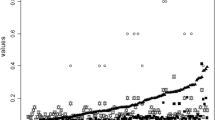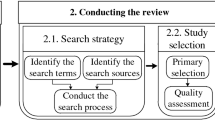Abstract
Privacy protection has received a lot of attention in recent years since in the era of big data, abundant information about individuals can be easily acquired. Meanwhile, as a prerequisite for effective privacy protection, the measurement of privacy disclosure is essential. Although some work has been done on the evaluation of privacy disclosure via quantification for the protection of privacy, not much attention has been placed on exploring the relationships between privacy information, resulting in underestimation, if not ill-formed reasoning, of privacy disclosure. In this paper, we propose an ontology-based approach to measure privacy disclosure by exploring the relationships between privacy information based on the WordNet. We first propose an algorithm for deriving or measuring privacy disclosure based on a set of words or concepts from text data related to individuals to ensure that the disclosure of certain user privacy can still be deduced and measured even if the set of words or concepts don’t seem to be much related to it. We then perform a set of experiment by applying the proposed algorithm to some public information of ten public figures from different walks of life to evaluate the effectiveness of the algorithm and to shed some light on the characteristics of privacy disclosure in the real world in the era of big data. The work can thus serve as the foundation for the development of mechanisms for limiting or reducing privacy disclosure to achieve better protection of individual privacy.



















Similar content being viewed by others
References
Attili, V. S. P., Mathew, S. K., & Sugumaran, V. (2021). Information privacy assimilation in IT organizations. Information Systems Frontiers, 2021, 1–17.
Belaazi, M., Rahmouni, H.B., & Bouhoula, A. (2015). An ontology-based guidance for privacy enforcement in a multi-authority cloud environment. Proc. IEEE international conference on cloud computing technologies and applications, 373–379, Marrakech, Morocco.
Blauw, F. F., & von Solms, S. (2017). Towards Quantifying and Defining Privacy Metrics for Online Users. In Proc. 2017 IST-Africa week conference, 1–9. Windhoek.
Chen, B.C., LeFevre, K., & Ramakrishnan, R. (2007). Privacy skyline: Privacy with multidimensional adversarial knowledge. Proc. 33rd international conference on very large data bases, 770–781, Vienna, Austria.
Chen, L., Lu, R., Alharbi, K., Lin, X., & Cao, Z. (2014). ReDD: Recommendation-based data dissemination in privacy-preserving Mobile social networks. Security and Communication Networks, 8(7), 1291–1305.
Chiusano, S., Cerquitelli, T., Wrembel, R., & Quercia, D. (2020). Breakthroughs on cross-cutting data management, data analytics, and applied data science. Information Systems Frontiers, 23(1), 1–7.
Chou, J.K., Bryan, C., & Ma, K.L. (2017). Privacy preserving visualization for social network data with ontology information. Proc. 10th IEEE Pacific visualization symposium, 11-20, Seoul, South Korea.
Choudrie, J., Patil, S., Kotecha, K., Matta, N., & Pappas, I. (2021). Applying and understanding an advanced, novel deep learning approach: A Covid 19, text based, emotions analysis study. Information Systems Frontiers, 2021, 1–35.
Cranor, L., Langheinrich, M., Marchiori, M., Presler-Marshall, M., & Reagle, J. (2002). The platform for privacy preferences 1.0 (P3P1.0) specification. http://www.w3.org/TR/P3P/, Accessed 10 October 2019.
Dan, W., Zhao, W., & Ding, Z. (2017). Review of big data security critical technologies. Journal of Beijing University of Technology, 43(3), 335–349.
Du, X. Y., Li, M., & Wang, S. (2006). A survey on ontology learning research. Journal of Software, 17(9), 1837–1847.
Fellbaum, C., & Miller, G. (1998). WordNet: An electronic lexical database. MIT Press.
Finlayson, M.A. (2014). Code for Java Libraries for Accessing the Princeton Wordnet: Comparison and Evaluation. Proc. 7th International Global WordNet Conference, 78–85. Tartu, Estonia.
Huo, Y., Ma, L., & Zhong, Y. (2018). A big data privacy respecting dissemination method for social network. Journal of Signal Processing Systems for Signal Image and Video Technology, 90(4), 467–475.
Kanaan, H., Mahmood, K., & Sathyan, V. (2017). An Ontological Model for Privacy in Emerging Decentralized Healthcare Systems. Proc. 2017 IEEE 13th international symposium on autonomous decentralized systems, 107–113, Bangkok, Thailand.
Li, T.C., & Li, N.H. (2008). Injector: Mining Background Knowledge for Data Anonymization. Proc. 2008 IEEE 24th international conference on data engineering, 446–455, Cancun, Mexico.
Miller, G. A. (1995). WordNet: A lexical database for English. Communications of the ACM, 38(11), 39–41.
Omoronyia, I. (2016). Reasoning with Imprecise Privacy Preferences. Proc. 2016 24th ACM SIGSOFT international symposium on foundations of software engineering, 952–955, Seattle, WA, USA.
Rahmouni, H. B., Munir, K., Essefi, I., Mont, M., & Solomonides, T. (2021). An ontology-based compliance audit framework for medical data sharing across Europe. The International Arab Journal of Information Technolog, 18(2), 158–169.
Rahmouni, H. B., Solomonides, T., Mont, M. C., & Shiu, S. (2009). Ontology-based privacy compliance on European Healthgrid domains. Studies in Health Technology and Informatics, 147, 183–189.
Rumbold, J., & Barbara, K. P. (2018). What are data? A categorization of the data sensitivity Spectrum. Big Data Research, 12, 49–59.
Sacco, O., & Passant, A. (2011). A privacy preference ontology (PPO) for linked data. Proc. linked data on the web workshop at the 20th international world wide web conference, Hyderabad, India.
Štolba, M., Tožička, J., & Komenda, A. (2018). Quantifying privacy leakage in multi-agent planning. ACM Transactions on Internet Technology, 18(3), 1–21.
Tian, G., Li, G., Su, L., & Chen, X. (2017). Services Rating Based on Privacy-Ontology in Semantic Web of Things. Proc. 2017 9th international conference on intelligent human-machine systems and cybernetics, 16–20, Hangzhou, China.
Vallejos, S., Alonso, D. G., Caimmi, B., Berdun, L., Armentano, M. G., & Soria, A. (2020). Mining social networks to detect traffic incidents. Information Systems Frontiers, 23(1), 115–134.
Ulybyshev, D., Bhargava, B., Villarreal-Vasquez, M., Alsalem, A.O., Steiner, D., Li, L., Kobes, J., Halpin, H., & Ranchal, R. (2017). Privacy-Preserving Data Dissemination in Untrusted Cloud. Proc. 2017 IEEE 10th international conference on cloud computing, 770–773, Honolulu, HI, USA.
Vincent, J., Porquet, C., Borsali, M., & Leboulanger, H. (2011). Privacy protection for smartphones: An ontology-based firewall. Proc. IFIP international workshop on information security theory and practices, 371–380, Heraklion, Crete, Greece.
Wang, Q., & Jin, H. (2011). Quantified risk-adaptive access control for patient privacy protection in health information systems. Proc. 6th international symposium on information, computer and communications security, 406–410, Hong Kong, China.
Hao, W., & Lin, Y. (2019). Research on social responsibility of internet enterprises and its enlightenment. Netinfo Security, 19(9), 130–133.
Zhang, R., Chen, D., Shang, X., Zhu, X., & Liu, K. (2018). A knowledge-constrained access control model for protecting patient privacy in hospital information systems. IEEE Journal of Biomedical and Health Informatics, 22(3), 904–911.
Zhu, N., Wang, S., He, J., Teng, D., He, P., & Zhang, Y. (2018). On the suitability of applying WordNet to privacy measurement. Wireless Personal Communications, 103(1), 359–378.
Acknowledgments
The work presented in this paper has been supported by National Natural Science Foundation of China (No. 61602456).
Author information
Authors and Affiliations
Corresponding author
Additional information
Publisher’s Note
Springer Nature remains neutral with regard to jurisdictional claims in published maps and institutional affiliations.
Rights and permissions
About this article
Cite this article
Zhu, N., Chen, B., Wang, S. et al. Ontology-Based Approach for the Measurement of Privacy Disclosure. Inf Syst Front 24, 1689–1707 (2022). https://doi.org/10.1007/s10796-021-10180-2
Accepted:
Published:
Issue Date:
DOI: https://doi.org/10.1007/s10796-021-10180-2




